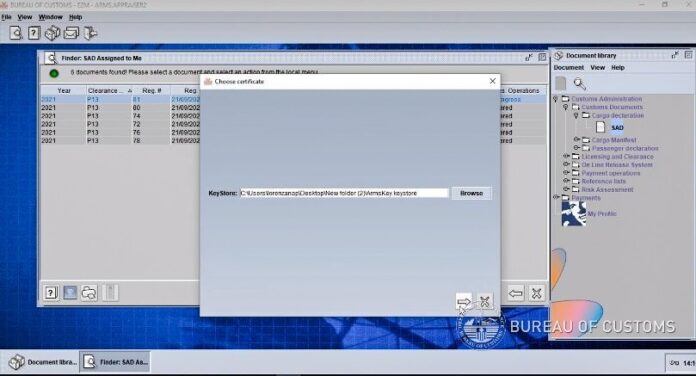
-
The Bureau of Customs will deploy its Automated Routing and Monitoring System (ARMS) in Davao Port by November 2021
-
Davao is the last collection district to roll out the system
-
ARMS randomly assigns consumption goods declaration to customs operations officers
-
ARMS replaces the Goods Declaration Verification System
The Bureau of Customs (BOC) aims to complete the deployment of its Automated Routing and Monitoring System (ARMS) for goods declarations by November 2021 when it finally rolls out the system at Davao Port.
ARMS randomly assigns consumption goods declaration to customs operations officers (COO).
READ: BOC automated assignment of goods declaration to start at Manila ports
The system, embodied in Customs Memorandum Order (CMO) No. 25-2021, was initially implemented at the Manila International Container Port (MICP) in August 2021 and has been gradually enforced in all other collection districts and subports, including Port of Manila, Ninoy Aquino International Airport (NAIA), Clark, Limay, Mariveles, San Fernando, Sual, Aparri, Curimao, Subic, Cebu, Dumaguete, Mactan, Batangas, Davao, Dadiangas, and Surigao, Cagayan De Oro, Ozamis, Iligan, Zamboanga, Iloilo, Legazpi, Tacloban, Isabel, and Mindanao Container Terminal.
When it implements ARMS in Davao port by November 2021, it will have completed the full rollout of the system, BOC said.
The ARMS is a subsystem in BOC’s Electronic-to-Mobile (E2M) system that enables automated random assignment of consumption entries to examiners and appraisers, particularly COOs III and V.
In addition, it offers a mechanism for importers and customs brokers to view updates on the status of their goods declaration via the publicly accessible ARMS online portal https://arms.customs.gov.ph/.
This system incorporates existing key features and functionalities of the previous Goods Declaration Verification System (GDVS), which it replaced.
BOC noted that the ARMS deployment is in compliance with the “zero contact policy” for government agencies as mandated by Republic Act No. 11032, or the Ease of Doing Business and Efficient Government Service Delivery Act of 2018.
BOC said institutionalizing such a policy “will suppress corruption that arises from the ‘suki’ system, which was prevalent before the introduction of randomized assignments of goods declarations.” Face-to-face transactions between stakeholders and customs appraisers and examiners have been identified as a possible window for corruption.
Under CMO 25-2021, ARMS applies to all goods declarations lodged in the E2M System and processed by the Formal Entry Division (FED) or its equivalent units.
Once the goods declaration is lodged, the ARMS will randomly assign the declaration to a COO III and COO V at the port of discharge.
In the case of the Port of Manila and MICP, the ARMS will randomly route the goods declaration to a COO III and COO V of the assigned FED Section concerned.
In the case of NAIA, the ARMS will randomly route the goods declaration to a COO III and COO V of the designated off-terminal customs facility warehouse.
Existing regulations on the online filing of goods declaration and its supporting documents through the Customer Care Portal System (CCPS) will still be in full force and effect, CMO 25-2021 noted. CCPS (https://client.customs.gov.ph/) is a web-based application introduced in June 2019 for the online filing of goods declaration. – Roumina Pablo




